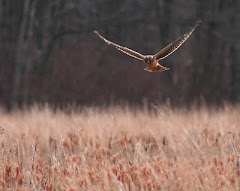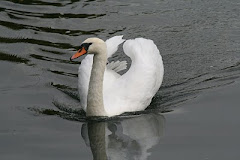
There is an angler who often sits for hours on the bank opposite our house. He is a friendly and knowledgeable chap and we often have long conversations about the wildlife in and around the river. We also talk about the bites he has had, the catches he has made and how different the fishing in the canal is compared with the river. I think he is a bit of an expert, but this morning his expertise was placed very firmly in the shade as I witnessed a real master at work.
Gazing out of the bedroom window in my usual way I caught sight of a cormorant coming in to make its customary clumsy landing on the water just upstream of the bridge to the left of the window. I waited a minute or so for it to be carried by the current under the bridge and into view. For the next 90 seconds I was mesmerized. It dived under the water, a manoeuvre I had witnessed many times before, and resurfaced less than 10 seconds later with a fish, about six inches long and probably a dace, held firmly at right angles to its bill. A quick adjustment and the fish was swallowed head first.
This successful dive was followed by no less than six more as it drifted out of sight behind the cover of a large hawthorn on the bank, each dive producing exactly the same result. A 100% success rate is something rare in the world of predators and can only mean that all the conditions had conspired to create the perfect hunt. It also goes a long way to explain why cormorants have been used for centuries by fishermen across the world, from Peru to Japan and from China to Macedonia. They are trained to dive for fish with a ligature tied around the base of their throat. This allows them to swallow small fish but those that are too large are brought back to the fisherman. It also explains why some anglers in the U.K. are keen to see a drastic cull. In a recent T.V. interview one likened a cormorant fishing to a tiger killing sheep in a barn.
Having one grandfather who skippered a North Sea trawler and one who hand made sea boots does not qualify me to pass judgement on the relative skills of different fish catchers, but I admit I felt a little uncomfortable when I described the cormorant’s exploits to my angler friend. He took it well though and even proceeded to describe similar success by local dabchicks. In my experience they don’t quite match up to the cormorant though. I watched a dabchick this morning and though it could catch fish very effectively it repeatedly struggled to master the coup de grâce. It frequently spent several minutes trying to subdue even the tiniest prey and on more than one occasion had to dive again having allowed it to escape.Despite my fishing heritage I have only twice sampled this most primitive of activities. The first time was when I was about seven and my granddad, the by then retired trawler skipper, agreed to take my brother Bob and me to a local pond. Bob had a small fishing rod but I don’t think I’m being disrespectful when I say we were both clueless. Much to my granddad’s chagrin the next few hours saw Bob and I land a succession of respectable sized roach, perch and fish I never did learn the names of, while he spectacularly failed to have any impact at all on the pond’s fish population. The final humiliation came when I accidentally kicked over his bait tin and all his maggots fell in the water. He was not impressed by my efforts to scoop them all back into the tin.
Needless to say we were never taken fishing again. I did try once more though, about 25 years later. This time I got a little closer to my heritage and cast my line off the sea wall but the experience of chasing an eel around the kitchen put me off for life – and my wife for even longer!


















.jpg)
























No comments:
Post a Comment